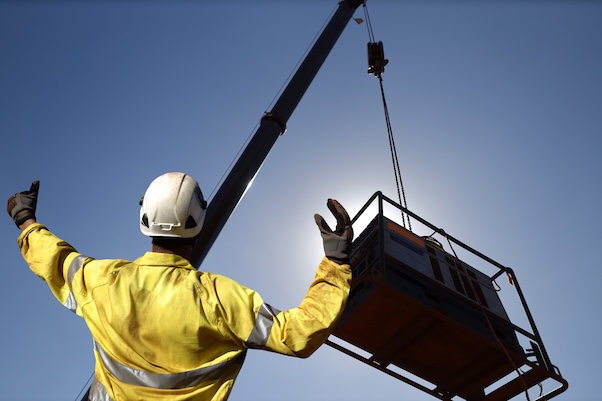
Introduction
Construction sites are bustling hubs of activity, where various heavy machinery and equipment work in tandem to bring architectural visions to life. Among these, cranes stand out as essential assets, lifting and moving heavy loads with precision. To ensure safety and coordination on construction sites, effective crane signals and communication are paramount. In this article, we will delve into the significance of crane signals, the standard signals used, and the crucial role of communication in optimizing construction processes.
Understanding Crane Signals
The Importance of Crane Signals
Construction sites can be chaotic environments, making clear and standardized communication crucial to prevent accidents and mishaps. Crane signals facilitate seamless coordination between crane operators and ground personnel, ensuring smooth operations and minimizing the risk of accidents.
Responsibility of the Signal Person
The signal person, often stationed near the crane, plays a pivotal role in communicating instructions to the crane operator. Their expertise in using standardized hand signals and understanding equipment limitations is vital for safe and efficient lifting operations.
Standard Crane Hand Signals
Stop
The “stop” signal is universally recognized and ensures that the crane operator halts all movement immediately. It is represented by extending one arm outward, with the palm facing downward and the other arm across the chest, indicating a complete stop.
Lower Load
To instruct the crane operator to lower the load, the signal person extends one arm downward, palm facing the ground, and moves their arm in a back-and-forth motion.
Raise Load
The “raise load” signal involves extending one arm upward, with the palm facing the crane, and making a vertical motion to indicate lifting the load.
Swing
To instruct the crane operator to swing the load horizontally, the signal person points in the direction of the desired swing, using a sweeping motion.
Travel
When the crane needs to move horizontally, the signal person extends one arm horizontally and points in the direction of travel.
Emergency Stop
The “emergency stop” signal is critical in urgent situations. The signal person forms fists with both hands and crosses their arms in front of their body to signal an immediate stop.
Importance of Effective Communication
Ensuring Clarity
Apart from hand signals, verbal communication is equally important. Crane operators and signal persons must have clear and concise conversations to avoid misunderstandings that could lead to accidents.
Radio Communication
With the advent of technology, many construction sites now rely on radio communication systems. These systems allow crane operators and ground personnel to communicate swiftly and effectively, even at considerable distances.
Enhancing Safety
Effective communication between the signal person and crane operator ensures that all safety protocols are adhered to during lifting operations. This significantly reduces the risk of accidents and injuries.
Our specialized training for crane operators is designed to provide you with the expertise and confidence to excel in the demanding world of heavy equipment operations, making you a valuable asset to any construction team.
The Role of Training and Certification
Importance of Training
To become a signal person or crane operator, proper training is essential. Training programs focus on teaching standardized hand signals, equipment operation, and safety procedures.
Certification Requirements
Certification is a crucial step for both signal persons and crane operators. Obtaining certifications ensures that individuals are competent and knowledgeable in their roles, contributing to a safer work environment.
Bulleted List: Crane Safety Tips
- Stay Clear of the Load
- Never stand under or near the suspended load to avoid potential accidents.
- Weather Awareness
- Be cautious of wind speed and adverse weather conditions that could affect lifting operations.
- Equipment Inspection
- Regularly inspect cranes and associated equipment to identify any signs of wear or malfunction.
- Secure the Load
- Properly secure the load to prevent it from shifting during lifting and movement.
- Ground Conditions
- Ensure the ground is stable and able to support the crane’s weight and the load’s weight.
Conclusion
Effective crane signals and communication are the backbone of safe and efficient construction sites. Standardized hand signals and clear verbal communication between the signal person and crane operator ensure a smooth workflow, minimizing accidents and maximizing productivity. By prioritizing proper training and certification, construction companies can create a safer work environment for everyone involved.
